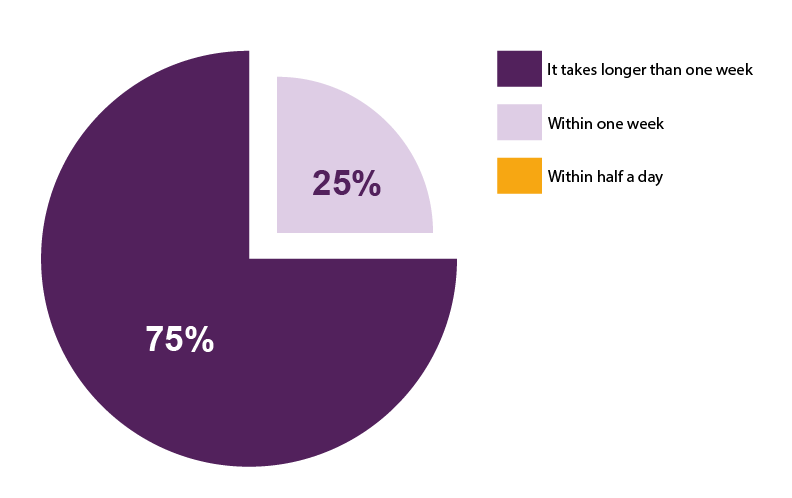Let us start by defining the purpose of a reporting data warehouse in the context of business reporting and budgeting.
A reporting data warehouse enables you to create a central location for your organisation’s financial and operational data. It provides the data flow for organising and aligning data from disparate systems, ingesting multifaceted data into one place for consistent reporting and performance analysis.
In summary it allows for fast, accurate, and secure production and sharing of information that doesn’t involve time consuming manual data preparation.
In what ways does the reporting data warehouse help the reporting and budgeting process?
1. Automation of data integration
The typical reporting process in an organisation usually requires combining data from various business systems such as accounting or ERP software, CRM for sales or product data, payroll, and job management systems, to name a few.
Without a reporting data warehouse, many resort to the painstaking and time-consuming task of exporting the data into files such as CSV and manually combining the information into Excel spreadsheets to get the data they need for reporting, budgeting, and forecasting.
This issue is further compounded by data entry errors or formula errors, leading to the possibility that the data presented may need to be corrected.
Another issue lies with the different data structures across the many systems. A reporting data warehouse provides the tools to organise and synthesise the data structure of each system and translate it into a universal format. A simple example is different date formats between systems or subsidiary companies that use a different chart of accounts structure that needs to be consolidated for reporting.
Analyse financial and operational data in one place.
Modern Corporate Performance Management (CPM) platforms, such as Solver, have several pre-built APIs (Application Programming Interface) for popular business systems such as Microsoft Dynamics ERPs, CRM, Sage, Acumatica, Netsuite, Quickbooks, SAP Business One, and Salesforce.
The configuration of the integrations is quick and easy, reducing reliance on internal IT resources or external developers. In addition to pre-built integrations, Solver offers generic connectors such as OData and SQL Connector, expanding the possibilities of the data integrations that can be set up.
Integrations can be scheduled to pull data in at regular intervals such as weekly, nightly, or every few hours. You can also refresh datasets on demand to reflect any last-minute transactions posted to the source system.
2. Improved Data integrity and consistency
One of the issues we observe when helping organisations improve their reporting and budgeting process is a need for unchallenged confidence and trust in data.
Over time, data definitions across business units often become misaligned, resulting in business units creating their reporting silos and sources of truth.
Root causal factors in the absence of trust are poor data integration or manual aggregation processes in Excel.
Data integrations with conflicting data definitions lead to misunderstandings and inaccurate or missing data and reports upon which performance analysis and decision-making may be based.
Increased accuracy and timely reporting
To enable confidence, Solver provides an array of data plugins.
The Solver reporting data warehouse provides simple mapping and integration tools to combine data into a single source of truth, and the Solver data plugins streamline the analysis process.
You may also need to apply some data transformation tasks before loading it into the data warehouse. Examples could be reversing positive and negative signs on revenues and expenses, or changing the data source format of a date field to the required date format.
These rules can be built in Solver once and used consistently, reducing the possibility of unexpected manual data entry errors or broken formulas.
3. Better performance and increased agility
A common theme that stands out when we talk to prospective clients about their reporting pain points is late reporting in the organisation.
Finance teams and business unit managers are under constant pressure of reporting deadlines.
In turbulent or fast-changing environments, leadership requires real-time reports to subdue worries about making critical decisions or recommendations based on outdated data.
Although various factors can affect the timeliness of reporting, we often see that the process of compiling the required data, the manual import and export process, and formatting, checking and re-checking of numbers is what takes time and delays the final reports. Add in occasional changes to the chart of accounts or the addition of a business unit, and the updating process takes longer, sometimes stretching into days.
In a recent poll at an online event, we asked attendees:
How quickly can you reflect a change to your organisation in your reporting and budgeting templates?
The results clearly show that making such changes is time-consuming for teams.

A modern reporting data warehouse provides the agility to make these changes quickly.
The reporting data warehouse also eliminates much of the time-consuming data aggregation prep work that is typically needed before the reporting process starts. The configuration is done once, and the data is refreshed as scheduled.
4. Ability to expand
One of the ways that the reporting data warehouse allows you to scale reporting across the organisation is the ability to incorporate new data sources into your reporting process over time.
You may start with enhancing reports from your ERP system and, over time, add data from additional sources, e.g., CRM, HR, or operational systems. As you expand, the data warehouse eliminates the requirement for reporting silos and manual workarounds.
You may also bring in data from external sources—such as vendors, government agencies, or market data—for forecasting purposes.
The Solver data warehouse has hybrid-cloud connectors that allow you to bring data into Solver from various sources, either on-premises or in the cloud.
In addition, most organisations we talk to have a Power BI strategy. They are either using Power BI or are planning to start. With its Power BI connector, Solver's Data Warehouse serves as a data source for Power BI visualisations.
5. Securing your company data
As mentioned in the introduction, in the absence of a reporting data warehouse, the most common workaround for report aggregation is to export data into CSV or Excel files and utilise manual spreadsheets.
Understandably, in addition to data integrity issues, data security is a big concern with Excel aggregation processes. Spreadsheets can be saved anywhere on shared or local drives (or even in inboxes), putting sensitive information at risk.
A reporting data warehouse provides the capabilities to automate data extraction, storing it securely in the data warehouse with controlled user access.
Solver users also benefit from the solution’s utilisation of Microsoft technologies, which includes availability on global Azure data centres and the use of Azure Active Directory for single sign-on.
In addition to automation, timeliness, data integrity, security, and confidence, there are other advantages to utilising Solver’s pre-built data warehouse to underpin your corporate performance management process.
If you are dealing with multiple currencies or multi-company consolidation and need eliminations, all these rules can be pre-built in Solver’s data warehouse.
On top of that, the Solver data warehouse is powerful but also built with self-service in mind so that business users can manage the data warehouse environment.







